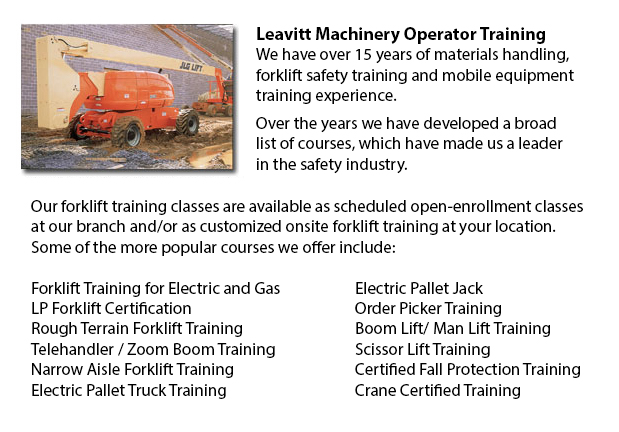
Aerial Boom Lift Ticket Alberta - Aerial hoists can accommodate many duties involving high and hard reaching places. Often utilized to perform regular preservation in structures with lofty ceilings, trim tree branches, raise burdensome shelving units or patch up phone cables. A ladder might also be utilized for some of the aforementioned projects, although aerial lifts provide more security and stability when properly used.
There are a variety of different designs of aerial lift trucks accessible, each being capable of performing slightly different jobs. Painters will often use a scissor lift platform, which is able to be utilized to reach the 2nd story of buildings. The scissor aerial jacks use criss-cross braces to stretch and lengthen upwards. There is a platform attached to the top of the braces that rises simultaneously as the criss-cross braces lift.
Bucket trucks and cherry pickers are a different kind of aerial lift. They possess a bucket platform on top of an elongated arm. As this arm unfolds, the attached platform rises. Platform lifts utilize a pronged arm that rises upwards as the handle is moved. Boom hoists have a hydraulic arm that extends outward and lifts the platform. Every one of these aerial lift trucks have need of special training to operate.
Training courses offered through Occupational Safety & Health Association, acknowledged also as OSHA, cover safety steps, machine operation, upkeep and inspection and device weight capacities. Successful completion of these training programs earns a special certified license. Only properly licensed individuals who have OSHA operating licenses should run aerial hoists. The Occupational Safety & Health Organization has formed guidelines to uphold safety and prevent injury while utilizing aerial hoists. Common sense rules such as not using this piece of equipment to give rides and ensuring all tires on aerial hoists are braced in order to hinder machine tipping are referred to within the rules.
Unfortunately, figures expose that in excess of 20 aerial hoist operators pass away each year while operating and just about ten percent of those are commercial painters. The bulk of these accidents were triggered by inadequate tie bracing, hence several of these could have been prevented. Operators should ensure that all wheels are locked and braces as a critical safety precaution to prevent the instrument from toppling over.
Other rules include marking the surrounding area of the machine in a visible way to safeguard passers-by and to ensure they do not approach too close to the operating machine. It is crucial to ensure that there are also 10 feet of clearance between any electrical lines and the aerial lift. Operators of this equipment are also highly recommended to always have on the appropriate security harness when up in the air.
-
Crane Training School Alberta
Crane Training School Alberta - The crane training school provides industry-relevant programs. Courses provide trainees with learning results which match current industry demands. Our small class sizes combine theory and hand-on experience. Our quali... More -
Aerial Lift / Boom Lift / Man Lift / Scissor Lift Training in Alberta
Scissor platform lifts are lift truck tables which lift up materials and people and supplies vertically. They are normally utilized in commercial, industrial and construction environments. A common use of scissor lifts is for lowering or lifting cons... More -
Forklift Certification Courses Alberta
Forklift Certification Courses Alberta - Forklift certification really helps to be able to ensure that businesses are following regulations and legislation. Forklift operators must go through certification prior to being permitted to run machinery. I... More -
Manlift Ticket Alberta
Manlift Ticket Alberta - The Elevated Platforms and Manlifts Certification program helps to provide the required training on the safe operating procedures, work practice, rules and regulations regarding the daily activities for the operators of this... More -
Crane Safety Training Alberta
Crane Safety Training Alberta - Both crane driver and their supervisors have to be aware of all the possible problems associated to the operation of an overhead crane. All over North America, there is legislation which provides rules for the safe ins... More -
Fall Protection Training in Alberta
There are high numbers of injuries at work connected to falling and a lot of fall-related deaths reported each year. Most of these instances might have been avoided with better training, better measures in place, and by correctly equipping staff befo... More -
Scissor Lift Ticket Alberta
Scissor Lift Ticket Alberta - Scissor hoists have significantly benefited construction operations in view of the fact that the work that used to need a lot of effort and lots of people, could now be done using the scissor lift and just one individual... More -
Overhead Crane Training Alberta
Overhead Crane Training Alberta - An overhead crane is a huge crane utilized to move and lift large, heavy things that can't be lifted by hand. An overhead crane is typically fixed in place when in use. These machinery are capable of moving huge volu... More

Forklift Training Alberta
TOLL FREE: 1-888-254-6157
forkliftcertificationalberta.com/
Email Us
About Us


